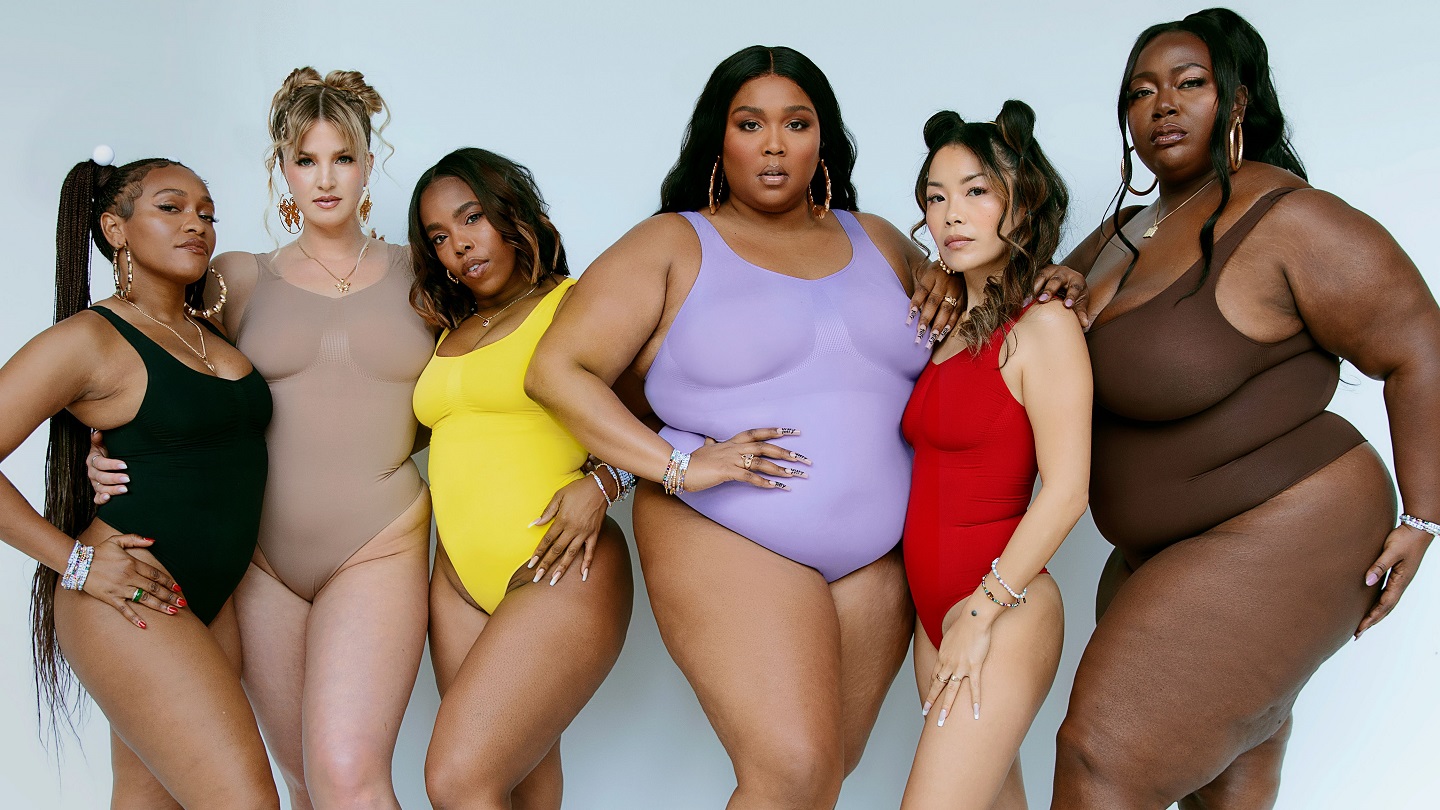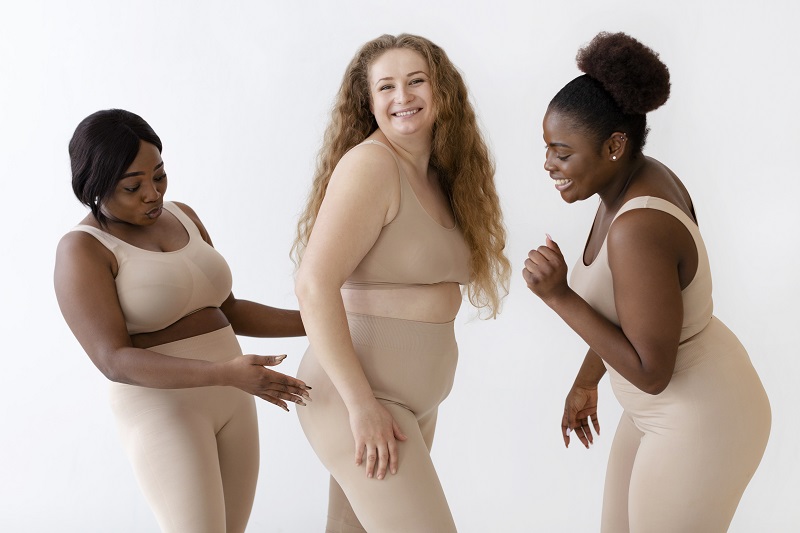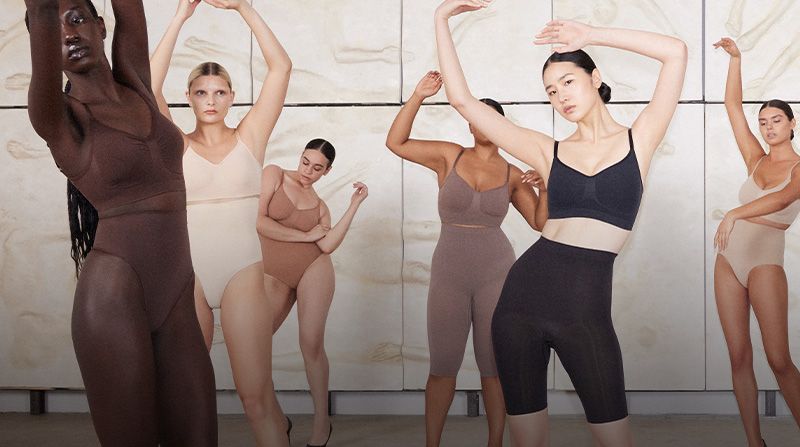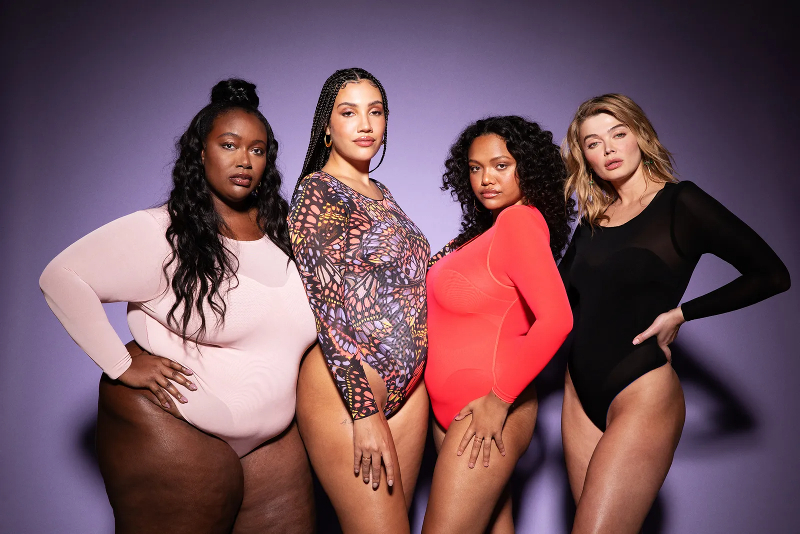
Co-created by three-time Grammy Award-winning artist Lizzo (middle), Yitty embraces bold styles, multiple sizes and bright colours (Photo: Yitty)
In case you missed it, shapewear has become a huge category in fashion lately. Far from the granny girdles of old, the sculpting gear of today — items include bodysuits, tanks and sculpting shorts — is sexy in its own right, way more comfortable than those worn by our mums and, most importantly, represent the values of inclusivity and body confidence. Which is ironic, considering that the point of shapewear is to mask lumps and bumps and present a smooth, refined silhouette.
Lest you thought shapewear was a modern affliction the industry placed on women, ’tis not so. The earliest record of this trend dates back to around 1,600 BC in Mycenaean Greece. The ancient Cretans who lived on the island pre-dating the Athenian invasion celebrated the female form in all its glory, and created undergarments that accentuated the waist, hips and breasts.
In more contemporary history, Roman women bound their busts to match the ideal of a small-chested, large-hipped figure, Victorian women were obsessed with the “wasp waist” and used corsets to shrink their waists down to 16 inches, while flappers helped achieve their boyish figure thanks to hip-slimming girdles.
But by the end of the 1960s, the girdle was gone. The women’s liberation movement did more than burn bras — it attacked the notion of constrictive undergarments. At the 1968 Miss America Protest, women threw girdles into the Freedom Trash Can, declaring them a symbol of female oppression.
three-confident-women-posing-together-while-wearing-body-shaper.jpg

But shapewear? That remained popular. Instead of girdles or corsets, women donned control pantyhose, and increasingly turned to diet and exercise — along with plastic surgery — to mould their bodies. And in the 2000s, the invention of Spanx brought shapewear back into the spotlight. Up to that point, you could argue that while modern-day shapewear was lighter and less restrictive than steel corsets, it served the same purpose: manipulating bodies to fit current fashions.
In many ways, it still does. The shapewear market, valued at US$3.8 billion in 2016, was set to reach a whopping US$5 billion in 2021, according to Statista, which is testament to the widespread acceptance of this market segment around the world. What may have changed over the years is our attitude towards shapewear: it is no more something to be ashamed of or hidden, and instead, has become part and parcel of the modern wardrobe, no matter your size.
“Everybody I work with, from movie stars to models, wears shapewear and about 99% of them are a size 0 or 2 … It just gives a feeling of security and physically makes a person stand straight and be more conscious of their posture,” celebrity stylist Phillip Bloch tells WWD. “People want that movie-star look. It’s affordable and there isn’t the stigma of cosmetic surgery and the paranoia. It’s like, ‘I put on my lipstick, my perfume and my shaper, and I can take it off whenever I want.’”
Gwyneth Paltrow, Jessica Alba, Oprah Winfrey and Queen Latifah have spoken publicly about wearing Spanx shapers at the Academy and the Grammy Awards. Shapers and related corsetry are also worn on stage by Lady Gaga, Rihanna and Miley Cyrus, which also helps eliminate the stigma once attached to wearing what used to be called a “granny girdle”.
skims.jpg

There is a good reason why we have been able to drop that particularly charming epithet, too — our grannies never had access to the kind of shapewear made today. Incorporating the best in material design and manufacturing processes, what was once constrictive innerwear has become wardrobe essentials that serve a purpose: Pieces now include moisture-wicking properties ideal for warmer climes like ours, compression wear that provides support for people who have to stand for long periods or suffer poor circulation, or structure that helps wearers have better posture. Shapewear of today makes you feel and look good, which should be the whole point of the fashion industry at large.
For any market to gain the kind of widespread success this industry has been garnering, inclusion is key. Demand for plus-size shapewear continues to grow, which is a box Kim Kardashian ticks with her venture into the category with Skims Solutionwear. Her brand is available in sizes XXS to 5XL — a broader range than Spanx at XS to 3XL. One of the many cult brands tackling the lack of diversity within “nude” coloured products, UK brand Heist is using data science to reinvent the wheel when it comes to this category. It developed seven shades of nude, which cover over 1,000 unique skin tones. Kardashian has also announced her upcoming range, which will be nude-inclusive, available in nine hues.
The most recent player in the market is musician Lizzo — real name Melissa Viviane Jefferson — who established Yitty, a no-shame, smile-inducing shapewear designed for all body types from size 6X to XS. It features innovative fabrics, bold colours, and stylish silhouettes that have been fit on every single body type, and not merely scaled up (or down) for convenience. Jefferson aims to to build a size-inclusive brand based on the principles of self-love, radical inner confidence and effortless, everyday wear. Yitty is particularly relevant because it acknowledges that shapewear is no more a concealed item of clothing, but often worn on its own these days.
yitty_lizzo.jpg

The future of shapewear is dictated by the technology that guides its innovations. Bonding and laser cutting have transformed products by eliminating seams, hems and bulky fastenings. And although lycra, neoprene, spandex and nylon are commonly used by manufacturers, new and improved materials are softer, more breathable, and have more efficient sculpting properties. For example, Sankom Switzerland has introduced an exclusive line of shapewear infused with aloe vera, which has antibacterial properties and enables the product to cool the body. Skins International launched a collection of compression clothing infused with fabric warp-knitted using multiple fine-quality yarns to give superior performance.
There is nothing inherently wrong in giving one’s body shape and definition it may not have on its own, but it’s important to note that all bodies are beautiful no matter their size, and acquiring shapewear should be about making yourself feel good — both physically and mentally — in your clothes. If it does not put a smile on your face and a pep in your step, it doesn’t work.
This article first appeared on Sept 26, 2022 in The Edge Malaysia.


